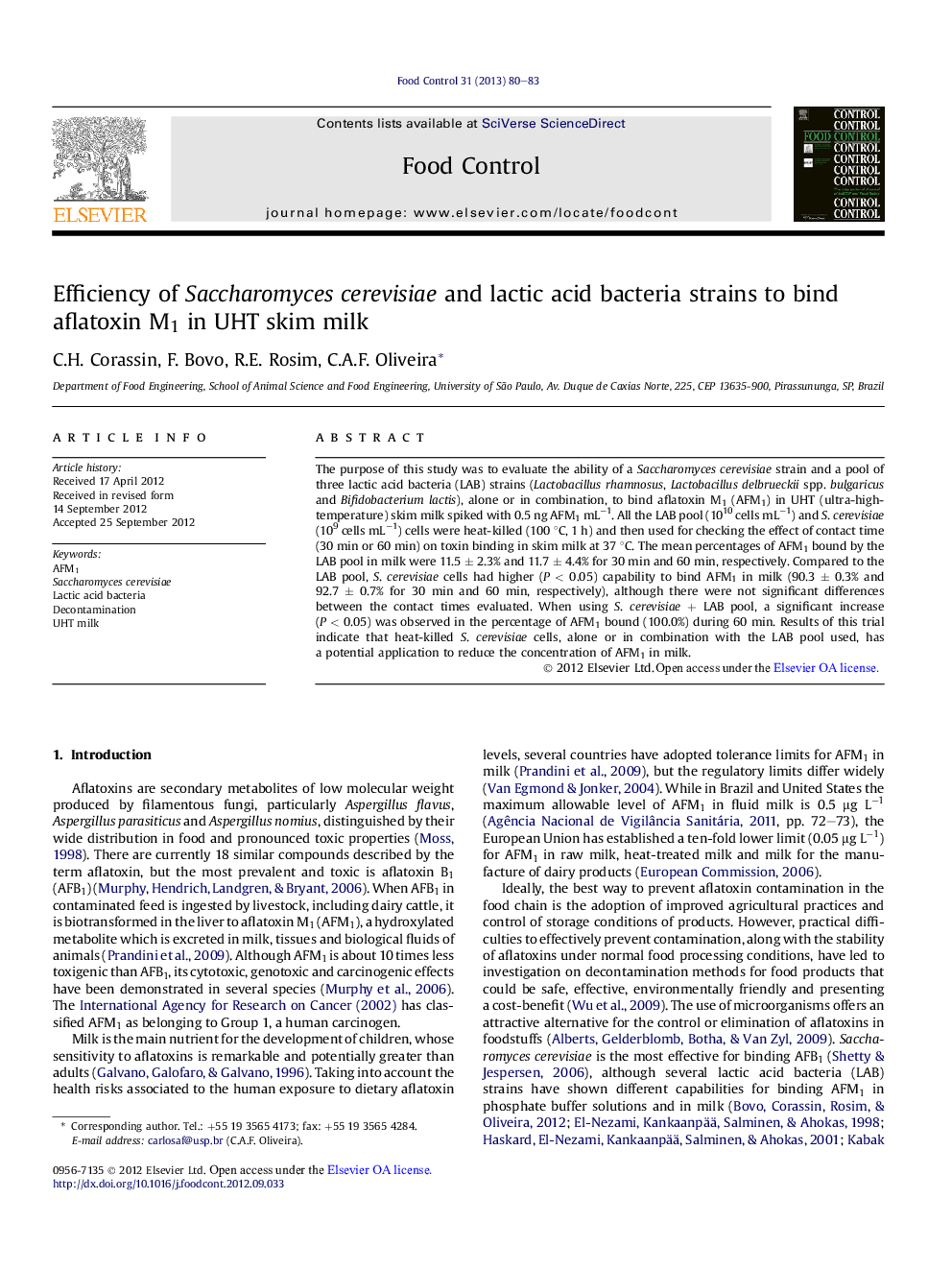| Article ID | Journal | Published Year | Pages | File Type |
|---|---|---|---|---|
| 6392779 | Food Control | 2013 | 4 Pages |
The purpose of this study was to evaluate the ability of a Saccharomyces cerevisiae strain and a pool of three lactic acid bacteria (LAB) strains (Lactobacillus rhamnosus, Lactobacillus delbrueckii spp. bulgaricus and Bifidobacterium lactis), alone or in combination, to bind aflatoxin M1 (AFM1) in UHT (ultra-high-temperature) skim milk spiked with 0.5 ng AFM1 mLâ1. All the LAB pool (1010 cells mLâ1) and S. cerevisiae (109 cells mLâ1) cells were heat-killed (100 °C, 1 h) and then used for checking the effect of contact time (30 min or 60 min) on toxin binding in skim milk at 37 °C. The mean percentages of AFM1 bound by the LAB pool in milk were 11.5 ± 2.3% and 11.7 ± 4.4% for 30 min and 60 min, respectively. Compared to the LAB pool, S. cerevisiae cells had higher (P < 0.05) capability to bind AFM1 in milk (90.3 ± 0.3% and 92.7 ± 0.7% for 30 min and 60 min, respectively), although there were not significant differences between the contact times evaluated. When using S. cerevisiae + LAB pool, a significant increase (P < 0.05) was observed in the percentage of AFM1 bound (100.0%) during 60 min. Results of this trial indicate that heat-killed S. cerevisiae cells, alone or in combination with the LAB pool used, has a potential application to reduce the concentration of AFM1 in milk.
⺠We evaluated the binding of Saccharomyces cerevisiae and 3 lactic acid bacteria strains to AFM1. ⺠Lactic bacteria strains bound to 11.5-11.7% of AFM1 in milk after 30-60 min. ⺠S. cerevisiae bound to 90.3-92.7% of AFM1 in milk after 30-60 min. ⺠S. cerevisiae + lactic bacteria strains bound to 100.0% of AFM1 in milk after 60 min.
